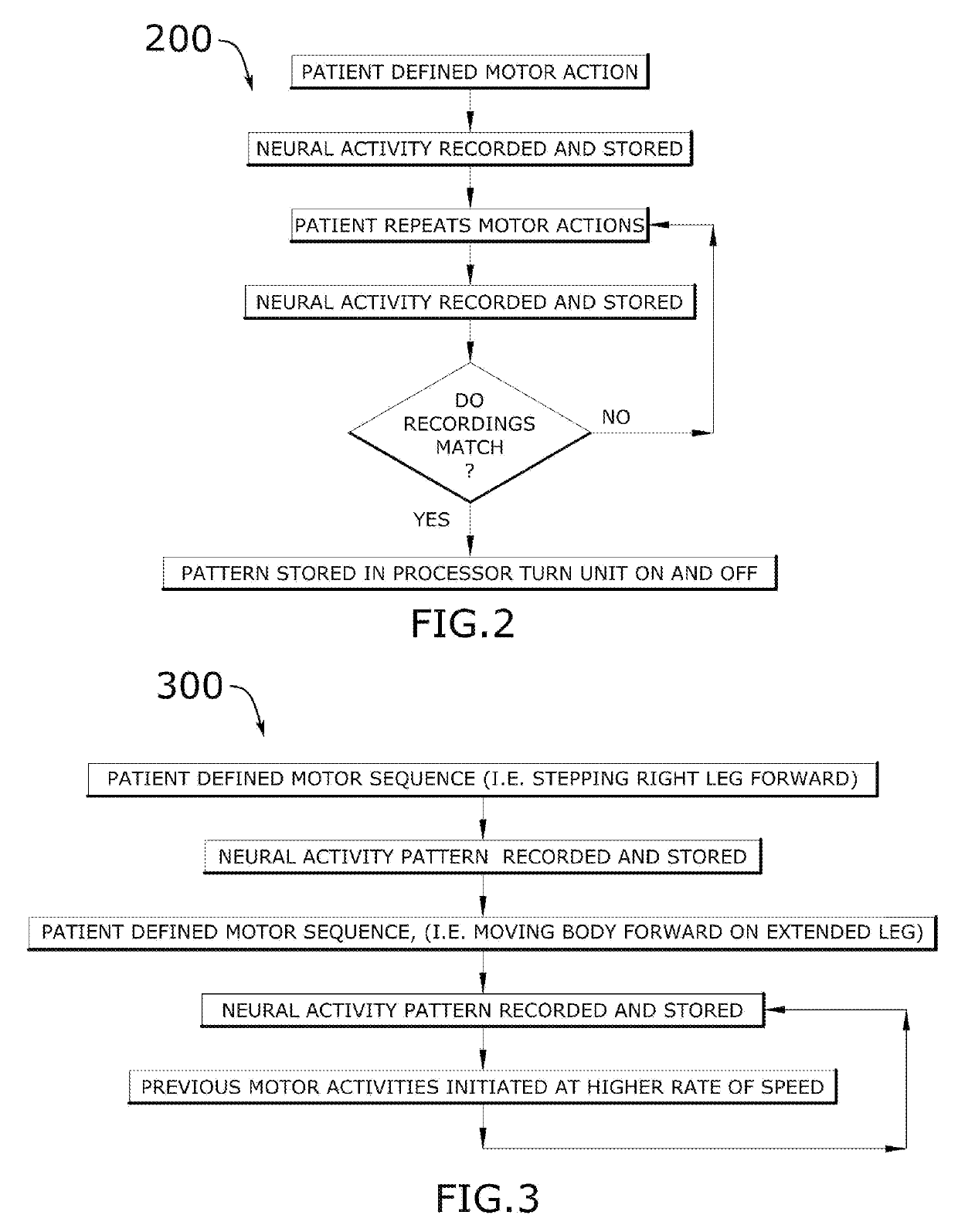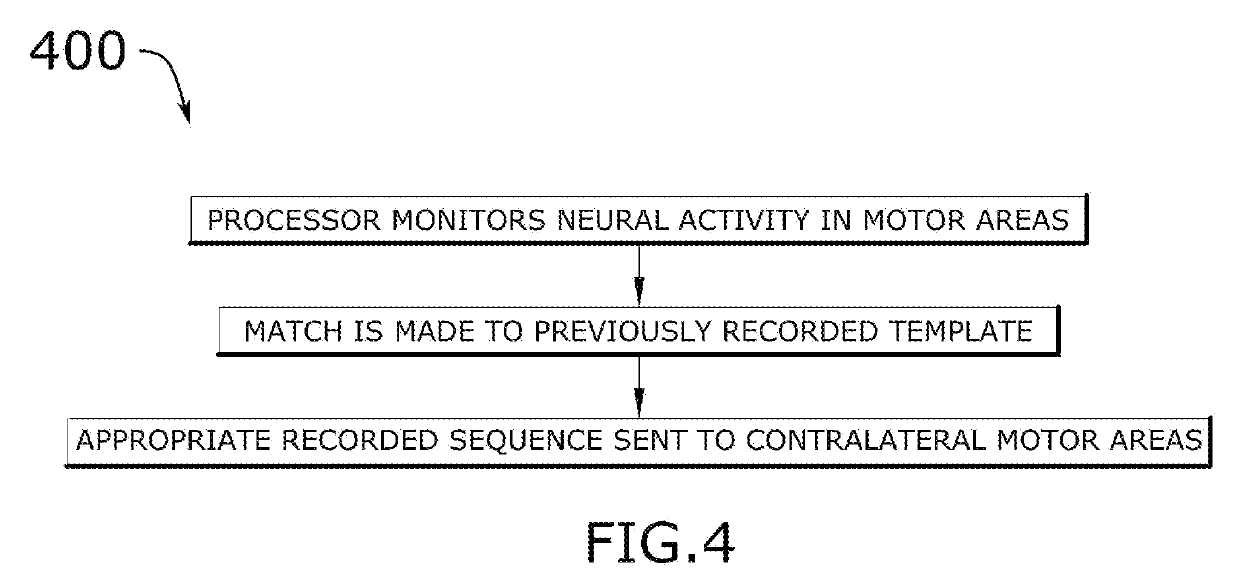Patient-initiated automatic control of neural tissues
a technology of neural tissue and patient, applied in the field of patient-initiated automatic control of neural tissue, can solve the problems of no existing system or method, and limited patient's ability to control the motor functions of body parts. , to achieve the effect of reducing the risk of stroke, providing transient and little if any long-term valu
- Summary
- Abstract
- Description
- Claims
- Application Information
AI Technical Summary
Benefits of technology
Problems solved by technology
Method used
Image
Examples
Embodiment Construction
[0026]In the following detailed description of the invention, numerous details, examples, and embodiments of the invention are described. However, it will be clear and apparent to one skilled in the art that the invention is not limited to the embodiments set forth and that the invention can be adapted for any of several applications.
[0027]Some embodiments of the invention include a novel patient-initiated automatic neural tissue control system and methods for controlling bodily motor functions by stimulating healthy neural tissues to compensate for damaged neural tissues naturally associated with the bodily motor functions. In some embodiments, the methods for controlling bodily motor functions by stimulating healthy neural tissues to compensate for damaged neural tissues naturally associated with the bodily motor functions include a method of providing patient-initiated automatic control of neural tissues. In some embodiments, the methods for controlling bodily motor functions by ...
PUM
 Login to View More
Login to View More Abstract
Description
Claims
Application Information
 Login to View More
Login to View More - R&D
- Intellectual Property
- Life Sciences
- Materials
- Tech Scout
- Unparalleled Data Quality
- Higher Quality Content
- 60% Fewer Hallucinations
Browse by: Latest US Patents, China's latest patents, Technical Efficacy Thesaurus, Application Domain, Technology Topic, Popular Technical Reports.
© 2025 PatSnap. All rights reserved.Legal|Privacy policy|Modern Slavery Act Transparency Statement|Sitemap|About US| Contact US: help@patsnap.com



